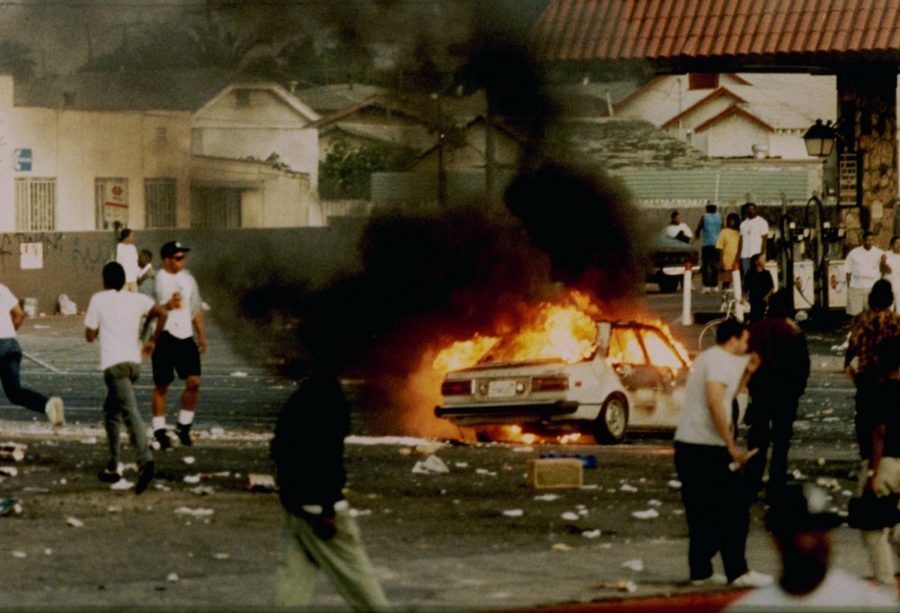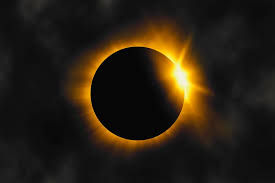L.A. Riots of 1992
September 23, 2020
On March 3, 1991, a high-speed police chase raced through Los Angeles, California. The man being chased was named Rodney King. He had just left a basketball game with his friends, and they decided that they were going to pick up girls. Melanie and Tim  Singer, two members of the Highway Patrol, had seen him going extremely fast and began to take off after him, going over 100 mph, nevertheless, King continued to speed down the freeway. The chase quickly attracted 3 police cars and a helicopter. Once they caught him, four officers by the names of Laurence Powell, Timothy Wind, Theodore Briseno, and Stacey Koon got out of their vehicles and told King to put his hands where they could see him, after him mocking them repeatedly and charging at an officer once, they began to beat him. They kicked him, beat him with batons, and shot him with tasers repeatedly. These officers, however, were unaware that they were being filmed by George Holliday, an amateur cameraman
Singer, two members of the Highway Patrol, had seen him going extremely fast and began to take off after him, going over 100 mph, nevertheless, King continued to speed down the freeway. The chase quickly attracted 3 police cars and a helicopter. Once they caught him, four officers by the names of Laurence Powell, Timothy Wind, Theodore Briseno, and Stacey Koon got out of their vehicles and told King to put his hands where they could see him, after him mocking them repeatedly and charging at an officer once, they began to beat him. They kicked him, beat him with batons, and shot him with tasers repeatedly. These officers, however, were unaware that they were being filmed by George Holliday, an amateur cameraman
who had been concerned by the ruckus that he was hearing nearby. They received several criminal charges and were taken to court. Their trial was supposed to take place in Los Angeles, but due to the copious amounts of publicity, it was moved to Simi Valley.
The jury consisted of 2 members of the NRA, 2 retired military veterans, 6 more white people, 1 black person, and 1 Hispanic person. Most of them had the same background and King’s lawyer knew that they were going to lose the case. The jury consultant for the defense took a liking to the jury, calling it a “gem of a jury.” California Highway Patrol member, Melanie Singer, was considered a witness to this incident, she told the court that officer Laurence Powell was the one to begin striking King, saying that he struck his head with a baton while King was on the ground. She also told the court that King had shown no signs of being on PCP, as the 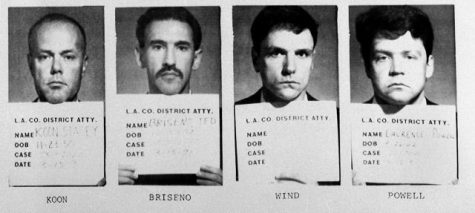 officers involved had claimed, saying that he had no trance-like stare and he was not sweating profusely. Michael Stone, who served as Officer Powell’s attorney, then tried to discredit Singer, who testified as his witness. Later in the case it was revealed that Powell compared the beating to a “good hardball game,” and made several jokes about the incident. Later, another witness was called to the stand, Officer Theodore Briseno. He claimed that he had told Powell to get off of him and told the jury that he thought Powell had been out of control and “had a look I’d never seen before”. He said that it seemed as if King had received a beating every time he moved, saying that the force used was excessive.
officers involved had claimed, saying that he had no trance-like stare and he was not sweating profusely. Michael Stone, who served as Officer Powell’s attorney, then tried to discredit Singer, who testified as his witness. Later in the case it was revealed that Powell compared the beating to a “good hardball game,” and made several jokes about the incident. Later, another witness was called to the stand, Officer Theodore Briseno. He claimed that he had told Powell to get off of him and told the jury that he thought Powell had been out of control and “had a look I’d never seen before”. He said that it seemed as if King had received a beating every time he moved, saying that the force used was excessive.
Despite visual and testimonial evidence of complete excessive force, the jury had ruled to acquit all 4 officers involved of 3 of the 4 charges issued. After this, chaos broke out across Los Angeles.
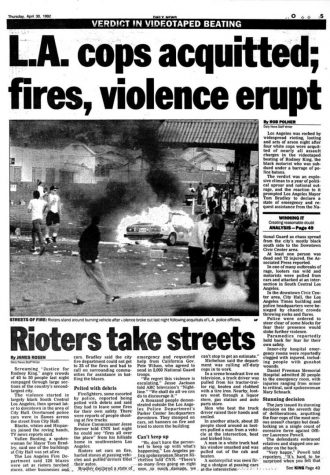
Outside of the courthouse, crowds began chanting “Guilty!”, Mayor Tom Bradley angrily announced the verdict, President George Bush had even been bewildered by the ruling.
It didn’t take long for violence to break out, starting with 5 men marching into a pay-less liquor store. They took several bottles of liquor and began walking out, but were stopped by the store owner’s son. His attempts to stop them were futile, as they smashed a bottle of malt over his head and continued on. This only happened about an hour after the verdict had been announced.
One of the most gruesome things to happen during these riots was the assault of truck driver Reginald Denny. He had been dragged out of his truck and was brutally beaten, the harshest thing to happen to him was when Damian Williams took a piece of concrete and smashed it into Denny’s head. This fractured his skull in 91 places. The riots continued on for 5 more days, more than 1,000 buildings had been burned down, 2,300 people were injured, 9,500 people were arrested for rioting, looting,and arson, and more than 50 people died.
After a week of violent rioting, Los Angeles was charred. Businesses were in shambles, apartments and housing were in ashes, and residents were misplaced. President George Bush began the process of pressing federal charges against the officers involved with King’s beating. On August 4, the grand jury returned the indictments against the officers, stating that they were guilty of “willfully and intentionally using unreasonable forc
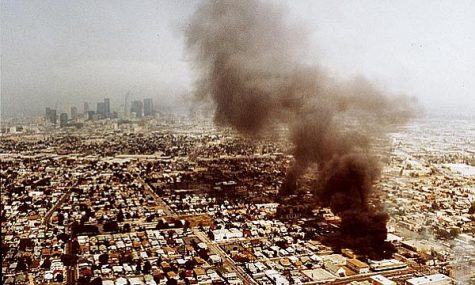
e.” On February 25, 1993, a Federal Civil Rights trial began against all 4 officers involved, and things were not looking well for them. The jury pressed charges against Officers Stacey Koon and Laurence Powell and acquitted Officers Timothy Wind and Theodore Briseno. Koon and Powell were faced with thirty months at federal correctional camps. On October 13, 1993 at 11:50 AM, Laurence Powell and Stacey Koon arrived at the Federal Prison Camp in Dublin, California.
After the verdict had been announced, rioting had ceased, Rodney King had received a $3.8 million verdict from the city of Los Angeles and used some of it to found a rap record business, and L.A. was never the same.

